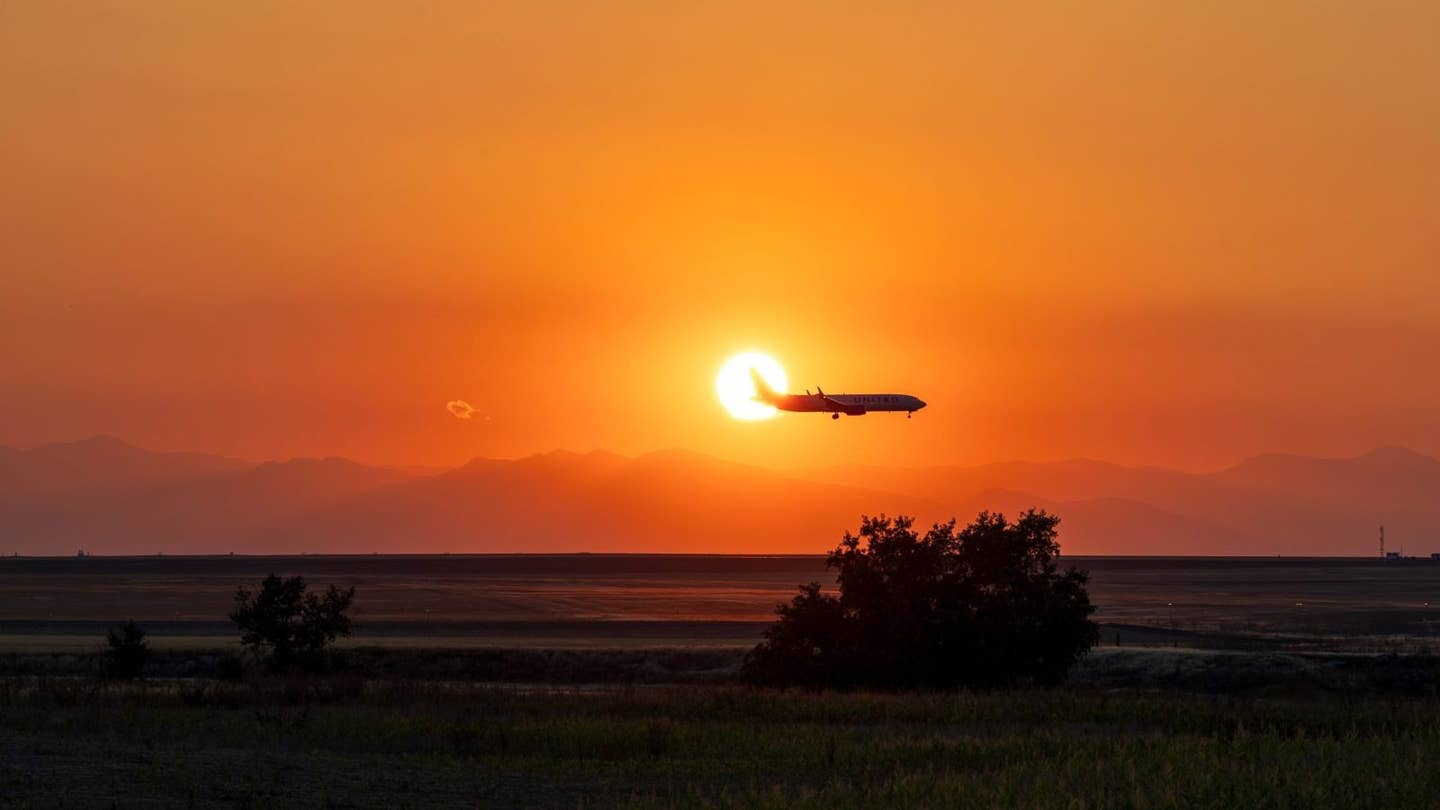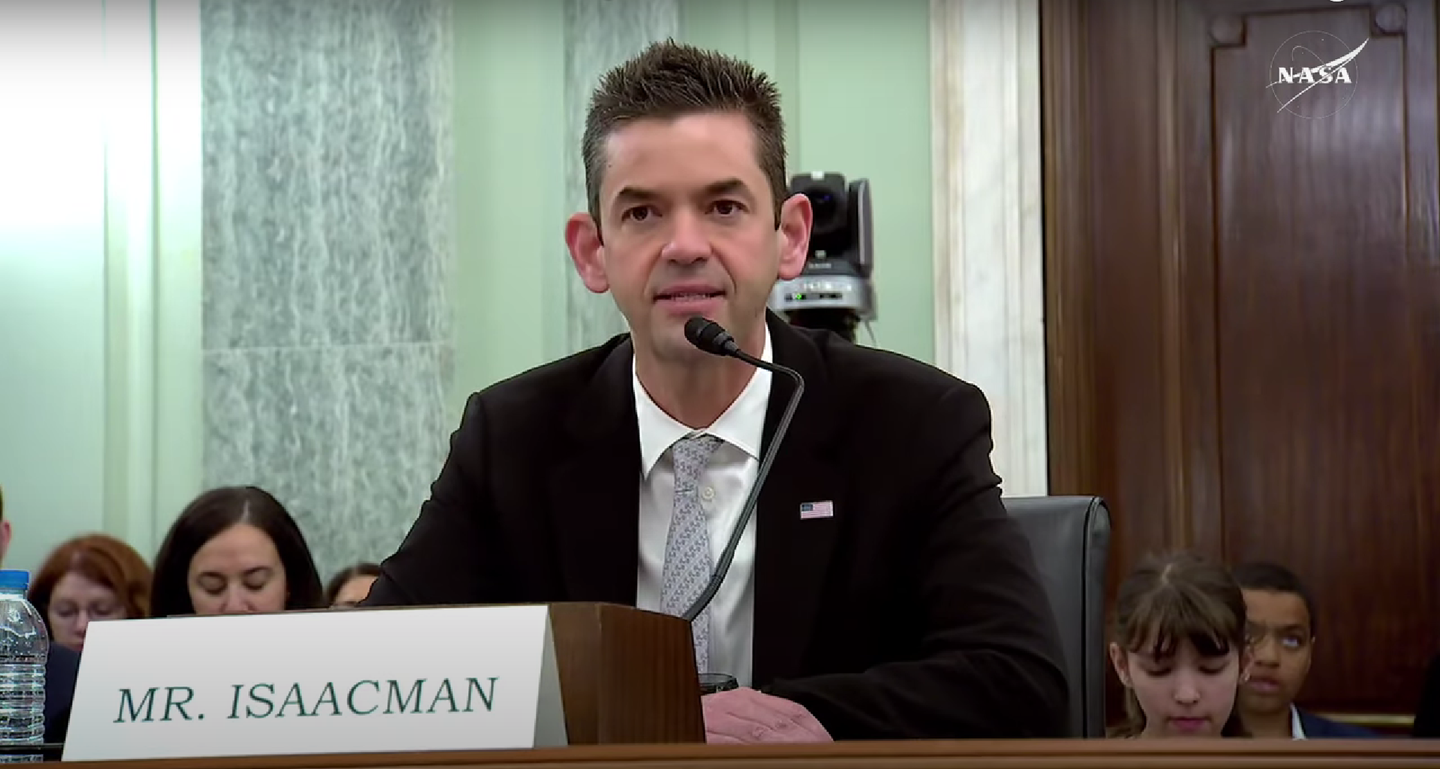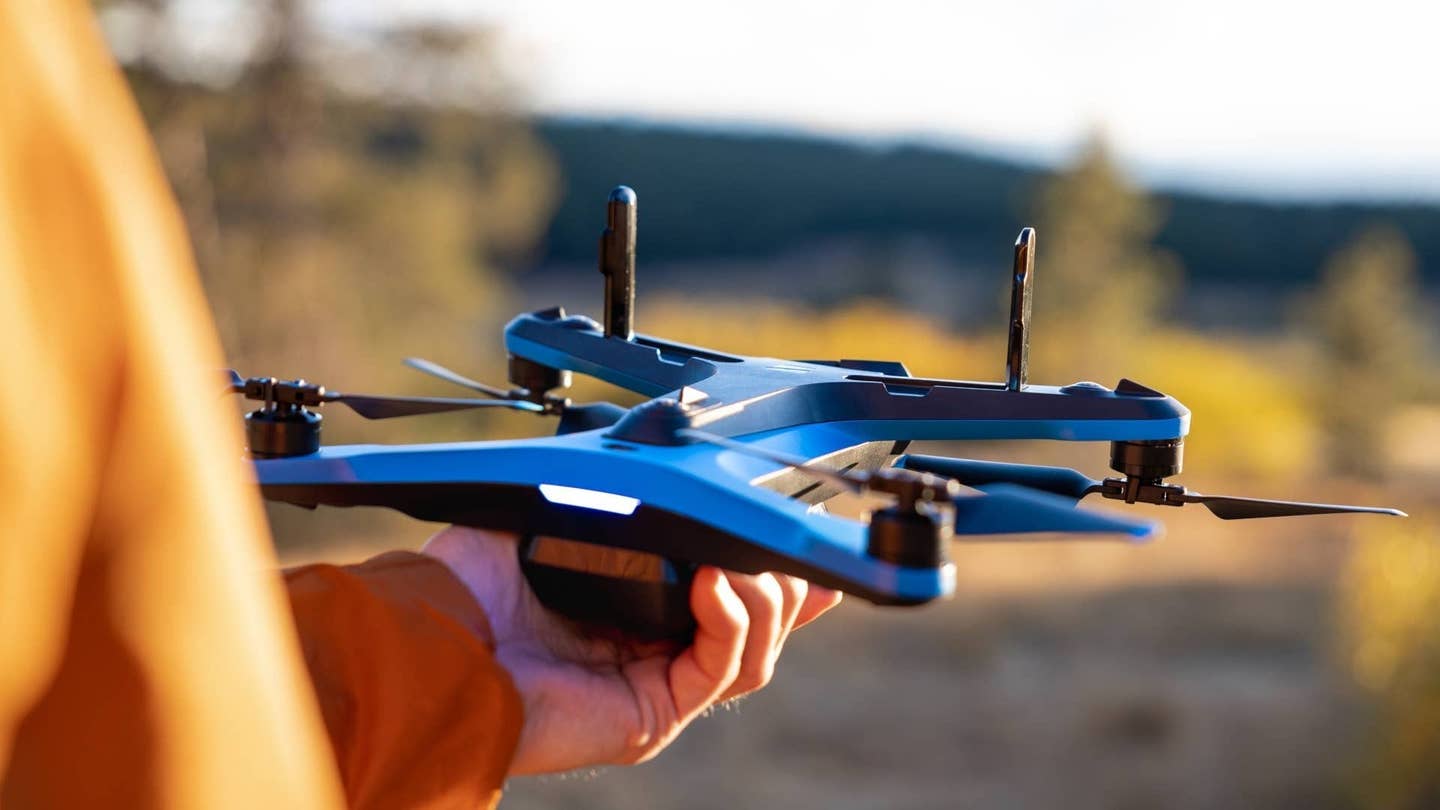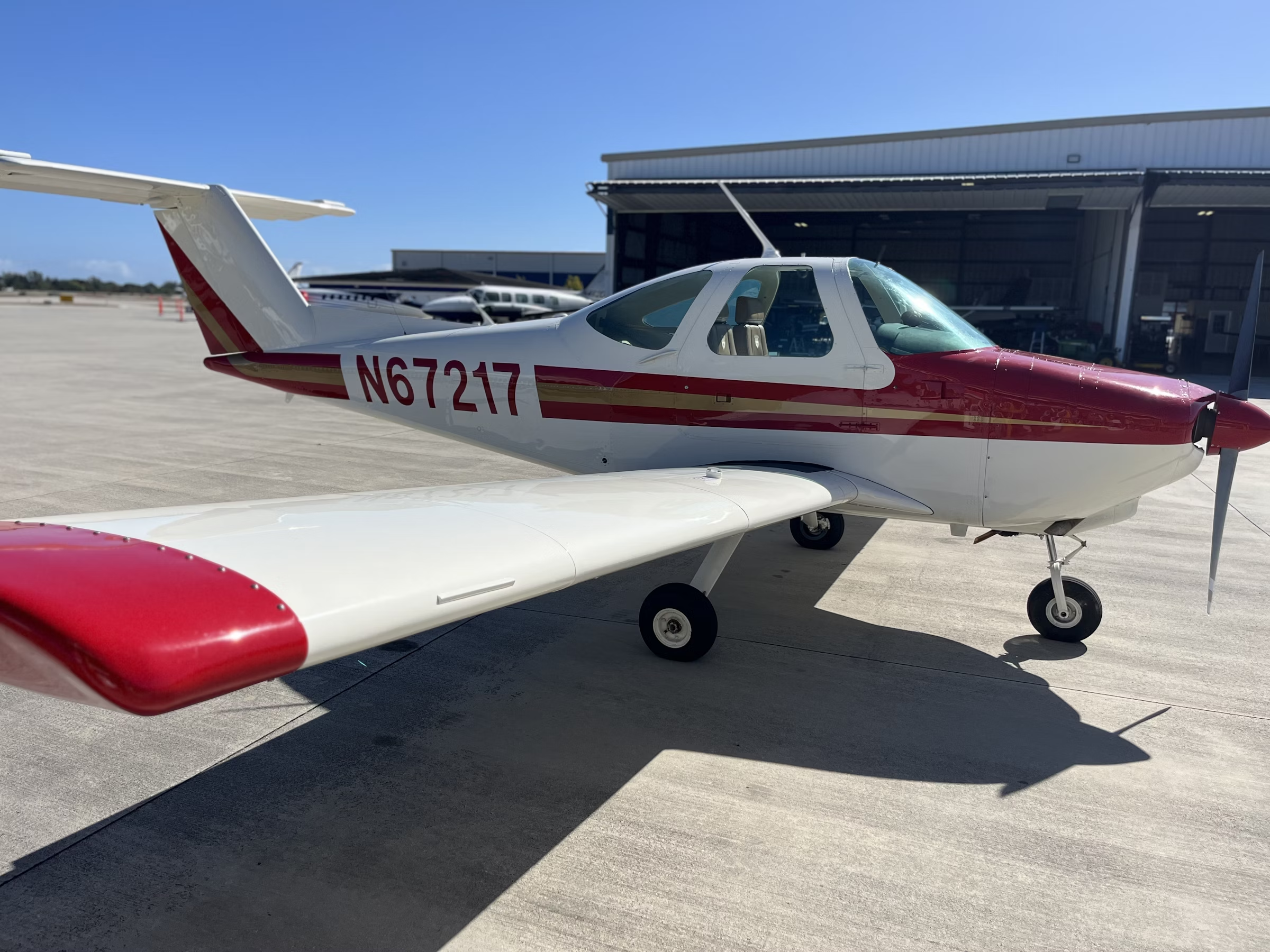Polaris Dawn Is SpaceX’s Most Experimental—and Risky—Human Spaceflight Yet
The four-person mission is scheduled to launch no earlier than Monday at 3:38 a.m. EDT.
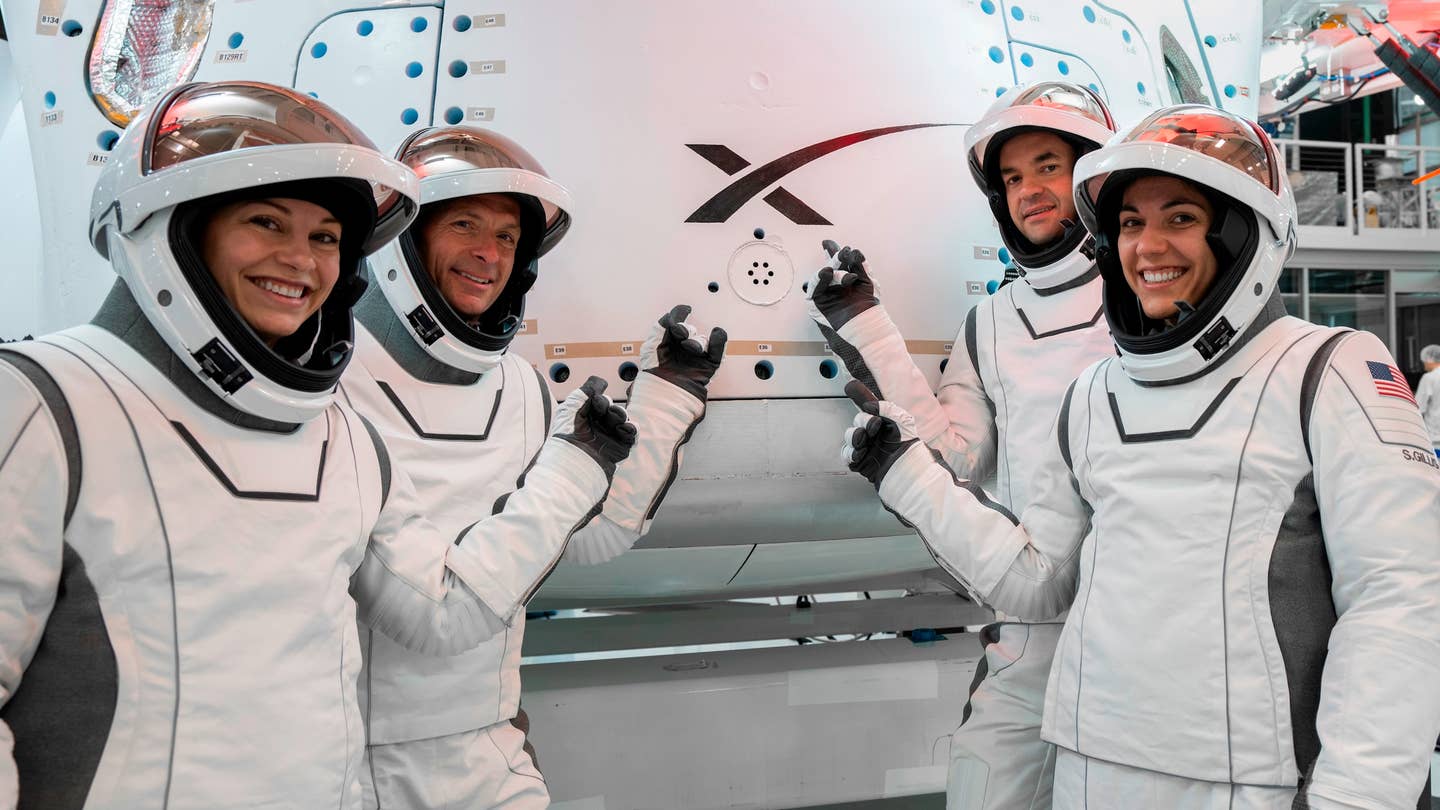
Polaris Dawn crewmembers Anna Menon (from left), Scott “Kidd” Poteet, Jared Isaacman, and Sarah Gillis don the SpaceX EVA spacesuits they will wear on their historic spacewalk. [Courtesy: Polaris Program]
On Monday, a small fleet of Dassault Alpha stunt jets landed at Kennedy Space Center in Florida carrying the four-person crew of arguably the most perilous SpaceX mission to date.
The jets are owned by billionaire entrepreneur and Polaris Dawn commander Jared Isaacman, who purchased the five-day orbital mission and two other private astronaut flights from SpaceX in 2022. Among other feats, Polaris Dawn will ascend to orbital heights not reached since the Apollo 17 astronauts in 1972 and feature the first attempt at a commercial spacewalk.
“The idea is to develop and test new technology and operations in furtherance of SpaceX’s bold vision to enable humankind to journey among the stars,” Isaacman said during a mission overview briefing on Monday.
But with those feats comes a degree of risk. At their apex, the astronauts will travel through a portion of the hazardous Van Allen radiation belts. And because the Dragon spacecraft that will carry the crew has no airlock, all four astronauts will be exposed to the vacuum of space during the historic spacewalk.
Polaris Dawn is scheduled to launch no earlier than 3:38 a.m. EDT on Monday within a four-hour window from KSC’s Launch Complex 39-A. Earlier this week, the Dragon capsule was transported to the pad, where teams are mating it with a Falcon 9 booster that will make its fourth flight.
Joining Isaacman will be mission pilot Scott “Kidd” Poteet, a longtime friend and coworker of the Shift4 Payments CEO. Poteet served as mission director for Inspiration4, a 2021 orbital mission—also purchased from SpaceX by Isaacman—that featured the first all-civilian crew.
Accompanying them will be the first SpaceX employees to actually fly to space—mission specialists Sarah Gillis and Anna Menon. Gillis, a SpaceX engineer and astronaut trainer, has prepared several NASA crews that have reached the final frontier and was Isaacman’s instructor for Inspiration4. Menon, the company’s lead space operations engineer, will also serve as Polaris Dawn’s medical officer.
This week, crewmembers will conduct a refresher on the mission’s nearly 40 planned experiments, dry dress rehearsal, and launch readiness review. They will spend a maximum of five days orbiting the Earth before splashing down at one of seven locations off the coast of Florida.
Great Heights
Polaris Dawn will waste no time achieving its objectives, beginning with a historic climb on day one.
Hitching a ride on Falcon 9, Dragon will reach space in about 10 minutes and within hours will begin to pass through the inner regions of the Van Allen Belts—a treacherous zone where the risk of damage from radiation is high.
“The Earth’s magnetosphere traps the high energy radiation particles and shields the Earth from the solar storms and the constantly streaming solar wind that can damage technology as well as people living on Earth,” according to NASA. “These trapped particles form two belts of radiation, known as the Van Allen Belts, that surround the Earth like enormous donuts.”
Dragon will ascend to an oval orbit with an apogee of 870 miles, more than three times higher than the International Space Station. It would be the highest orbital altitude reached by humans in half a century.
“Generally speaking, vehicles don’t like radiation, so that’s why we’re going to stay there for the shortest amount of time that’s necessary to gather the data we want,” said Isaacman.
In that time, however, the crew will perform plenty of experiments, leveraging the unique high-radiation environment to potentially learn from it. The Polaris program and SpaceX have partnered with more than 30 institutions around the world to perform the research, which will focus largely on human health.
“We are born into 1G,” said Menon. “When you go into 0G, whether it’s for five days or a nine-month trip to Mars, things change. You have bone density loss, you have vision changes, you have severe motion sickness, and we don’t have answers for all of that.”
To search for them, the astronauts will don special contact lenses that measure the pressure inside of their eyes and will test ways to reduce the disorientation experienced when returning to Earth, for example.
Research will continue throughout the mission. On the fourth day, the crew will test out a specially designed communication system in Dragon’s trunk, which will use laser beams to communicate with SpaceX Starlink satellites as they zip through space. According to Gillis, the demonstration will be livestreamed and worth tuning into, though she did not get into specifics.
Polaris Dawn is also a charitable endeavor, aiming to raise money for St. Jude Children’s Research Hospital. Menon, for example, will debut a children’s book she wrote, the proceeds for which will go to cancer research, during day two of the flight. The SpaceX engineer said the company has installed Starlink terminals at hospitals nationwide to support remote medicine capabilities.
And in a fundraising partnership with Doritos, Polaris Dawn’s cargo will include a container of chips. According to its website, the initiative has raised $500,000. But there won’t be any sticky fingers—the classic Doritos “dust” has been replaced by a special oil-based coating designed to retain flavor.
Isaacman on Monday said Polaris Dawn has already raised “millions” for St. Jude and that he plans to continue the partnership for the Polaris II and Polaris III missions. Inspiration4 raised more than a quarter of a billion for the charity.
Suit Up
Reaching the Van Allen Belts would be a huge feat. But that’s arguably the second-most important—and risky—mission objective.
On the third day of the flight, two of the astronauts will don specially designed SpaceX extravehicular activity (EVA) spacesuits and exit Dragon. They will remain attached to the spacecraft—at one point by just their feet—using mobility aids to maneuver around. The vehicle will be oriented to shield the crew from direct sunlight.
The entire process, from venting to repressurization, will take about two hours and will be livestreamed. Each astronaut will spend 15 to 20 minutes outside the capsule.
“It will look like we’re doing a little bit of a dance,” said Isaacman, “...[but] we’re going through a test matrix on the suit. And the idea is to learn as much as we possibly can about this suit and get it back to the engineers to inform future suit design evolutions.”
But there’s a catch: Dragon does not have an airlock, which means all four crewmembers will be exposed to the vacuum of space.
To remedy this, they will perform a process known as “pre-breathing” beginning just one hour after reaching orbit. The procedure will acclimate the astronauts to a low-pressure environment by gradually reducing the pressure inside the capsule. According to Menon, the idea is to “slowly pull nitrogen out of our body and reduce our risk of decompression sickness.”
On the day of the spacewalk, their spacesuits will be pressurized with 100 percent oxygen for a final pre-breathe. The entire process will take about 45 hours.
Per Isaacman, the spacewalk portion of Polaris Dawn took up the bulk of mission planning, in part due to the development of SpaceX’s EVA suits.
The suits are an evolution of the company’s current apparel, which is designed to be worn only inside Dragon. The upgraded digs feature added mobility and materials pulled from Falcon 9’s trunk and interstage. A 3D-printed helmet includes a heads-up display, which shows spacesuit pressure, temperature, and humidity, as well as a clock to track the astronauts’ time in the void. The suit’s temperature can even be controlled using a dial.
“You might think that we would be extremely cold out in the vacuum of space, and actually we’re more concerned about being too warm,” said Menon.
The suits have undergone an “incredibly expensive testing campaign” with the crew, which has spent about 100 hours wearing them. Because the hardware is “constantly evolving,” per Menon, it could not be tested in a pool. Instead, the astronauts used special harnesses to simulate weightlessness and wore heavy down suits—the kind you’d need at the top of Mount Everest—over their EVA suits.
“We’re really trying to create an environment that doesn’t have convection, looking at thermals, looking at what we’ll actually experience in these suits,” said Menon. “We’ve covered everything from lifecycle testing, pressure testing, [micrometeoroid and orbital debris] testing, extreme hot and cold testing, [and] an entire campaign on [electrostatic discharge] and flammability testing.”
That level of rigor extended to the Dragon capsule, which itself required a few key modifications for the mission. SpaceX added a nitrogen repressurization system, for example, and made upgrades to the spacecraft’s environmental sensors and life support system.
“This includes adding a lot more oxygen to the spacecraft so we can feed oxygen to four suits through umbilicals for the full duration of the spacewalk,” said Menon.
Outside Dragon’s hatch, engineers installed what SpaceX calls the Skywalker, a structure that will help the astronauts find their footing in zero gravity. Atop the Skywalker is a new camera that will capture footage of the spacewalk. Handholds and footholds were added to the capsule’s interior.
In addition, all of that hardware has been “baked out” in a thermal vacuum chamber, Menon said, to burn off chemicals that could produce toxic gas when the capsule is vented.
Thousands of Hours
The astronauts have already prepared extensively for the spacewalk. They recently walked through the entire prebreathe process and venting and repressurization sequence, for example, inside the vacuum chamber at Johnson Space Center.
But that was only the tip of the iceberg.
“I can tell you without a doubt this has been some of the most challenging training that I’ve ever experienced, and I could not imagine a more qualified crew than these three individuals,” said Poteet, a retired U.S. Air Force fighter pilot and member of the Thunderbirds.
The astronauts performed zero-gravity flights in the vacuum chamber, trained in a centrifuge to experience g-forces, and spent time in an altitude chamber to get familiar with symptoms of hypoxia—a condition caused by low oxygen levels in the body. The crew also used a pressure chamber to practice many of the experiments they will conduct in space back on Earth. Gillis and Menon underwent medical training at partner hospitals to be qualified to care for the team.
Each crewmember also spent about 2,000 hours in a simulator, poring over spacecraft and system manuals, communication methods, crew resource management, and contingency scenarios.
“To put this into perspective, I flew fighters for 20 years—I accomplished about 1,500 hours in the simulator training for combat,” said Poteet.
Another key component of training was, as Poteet put it, “getting comfortable in uncomfortable scenarios.” Over the past few years, the crew has gone scuba diving and skydiving, flown fighter jets, and even summited Cotopaxi in Ecuador, a nearly 20,000-foot peak.
“When it’s a multiday journey to get to the summit, you’re dehydrated, you’re hungry, you’re grouchy…it sucks,” said Poteet. “And you learn a lot about yourself under this stressful environment, and you learn a lot about each other.”
‘The 737 for Human Spaceflight’
Though it was purchased by an outside stakeholder, Polaris Dawn has some major implications for SpaceX.
For one, it will be the company’s first mission with crew since Falcon 9 was grounded by the FAA in July. The rocket was quickly cleared for a return to action and has since completed several Starlink launches.
But the mission’s success—or lack thereof—could also inform the timeline of SpaceX’s Starship, the largest and most powerful rocket ever built.
Polaris Dawn is the first of three missions purchased by Isaacman. Little is known about the second, Polaris II, which will also use Dragon and Falcon 9. But Polaris III is intended to be the debut human spaceflight mission for Starship, which so far has completed four orbital test flights.
“It could very well be the [Boeing] 737 for human spaceflight someday,” said Isaacman. “But it'll certainly be the vehicle that will return humans to the moon and then on to Mars and beyond.”
SpaceX CEO Elon Musk has grand ambitions for Starship, such as ferrying humans to Mars in order to create a colony. But they will hinge on the company remaining on schedule—and, hopefully, learning as much as possible about its EVA spacesuits during Polaris Dawn.
Within one week of Dragon’s splashdown, the firm plans to host a Polaris Dawn mission debrief and question-and-answer session on X Spaces.
Like this story? We think you'll also like the Future of FLYING newsletter sent every Thursday afternoon. Sign up now.

Sign-up for newsletters & special offers!
Get the latest FLYING stories & special offers delivered directly to your inbox

